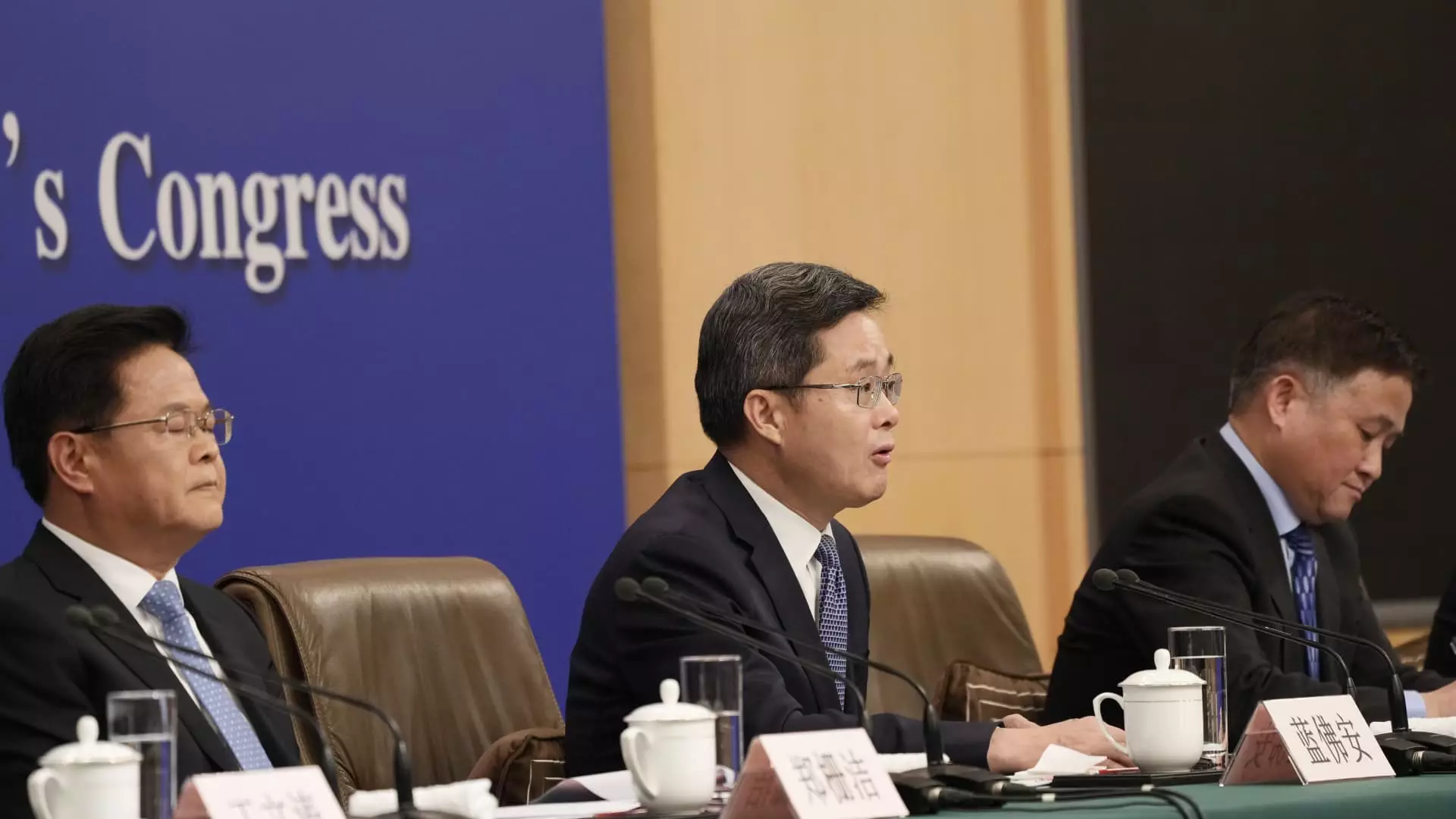China’s economic landscape is characterized by considerable complexity, particularly in light of recent statements made by Lan Fo’an, the country’s Minister of Finance. During a weekend press briefing, he revealed that the central government has the capacity to increase its debt and budget deficit, a pivotal admission that reflects both opportunity and necessity amid ongoing economic challenges. Lan’s indication that discussions are ongoing about potential policies designed to support local governments underscores a critical aspect of China’s fiscal strategy in this period of uncertainty.
Lan identified four key areas where policies have moved towards decision-making: aiding local governments in managing debt risks, addressing issues in the real estate sector, enhancing support for major state-owned banks, and tackling youth unemployment. Each of these focal points encapsulates pressing concerns that require immediate attention as they represent a significant portion of the economic fabric in China. The emphasis on local governments is particularly crucial because they play a vital role in infrastructure development and public services. However, the broader question remains: how effectively can these initiatives be implemented?
According to economists, there is pressing need for enhanced fiscal support from the central government, especially as Beijing has refrained from announcing specific stimulus measures despite the escalating circumstances. The lack of clarity and transparency can breed uncertainty among investors and market participants, potentially hindering the desired economic rebound.
Market analysts have put forth projections regarding the magnitude of fiscal stimulus necessary for sustaining growth, estimating requirements that could range from 2 trillion yuan (approximately $283 billion) to over 10 trillion yuan. Such wide-ranging estimates reflect the varying opinions on how the economy should respond to sluggish retail sales and a persistent slump in the real estate market—a sector that traditionally fuels much of China’s economic activity.
Ting Lu, chief economist for China at Nomura, expounded on the intricacies of any potential stimulus measures, noting that they would typically require approval from China’s parliament. This upcoming meeting is critical, as it presents an opportunity for lawmakers to delineate the exact means through which the government will navigate these turbulent economic waters.
Current indicators highlight a slow yet fragile pace of growth, with the GDP rising 5% in the first half of the year, raising valid concerns about meeting the government’s full-year target of approximately 5%. This situation is compounded by the anticipation surrounding the release of the third-quarter GDP figures by the National Bureau of Statistics on October 18, which will provide a clearer picture of the economy’s trajectory.
Following a week-long holiday, Chinese stock markets exhibited volatility, indicating market participants’ lingering uncertainty regarding the efficacy of fiscal measures. Despite an earlier rally fueled by anticipated government interventions, the recent declines have returned major indexes to levels reminiscent of late September, raising concerns about the sustainability of such gains.
The People’s Bank of China’s (PBOC) actions—including interest rate cuts and extensions to real estate support measures—were seen as attempts to stimulate investment. Moreover, the PBOC’s initiative allowing institutional investors to borrow approximately $71 billion for stock investments underscores the synergy between monetary and fiscal policy in addressing economic challenges.
The National Development and Reform Commission (NDRC) has committed to accelerating the utilization of 200 billion yuan designated for next year, primarily allocated for investment projects. However, the lack of additional stimulus announcements raises questions about the robustness of the planned policy measures.
As China navigates its multifaceted economic landscape, the necessity for clear and decisive fiscal direction is paramount. Policymakers must not only focus on the amount of stimulus allocated but also ensure that the funds are directed towards areas that will yield tangible benefits for the economy and society at large. As discussions continue regarding the future of fiscal policy in China, stakeholders will be watching closely for the developments that emerge in the coming weeks.


Leave a Reply